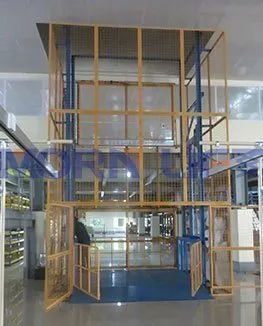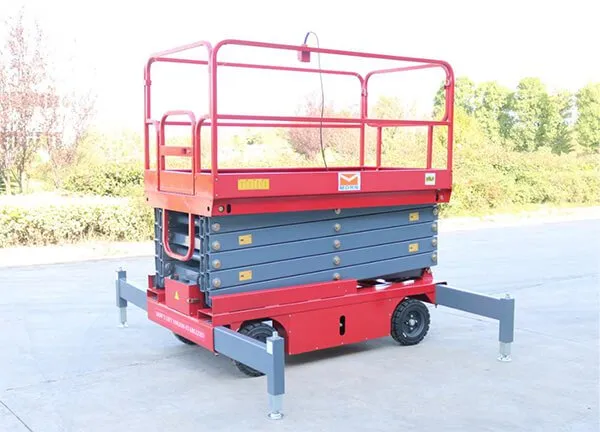Being widely used in an amount of industrial fields, hydraulic scissor lift table do play an essential part in modern society. It functions as a tool to lift materials up and down to achieve goods loading and offloading. Modern production lines frequently adopt such lift equipment to improve work efficiency and save operation cost. Scissor lift table may look like a very intricate piece of machine, but it’s actually pretty simple in design and structure. By learning how it was designed and structured, you could know more about the working principles and functions of it.
Table of Contents
I. 5 parts of a hydraulic scissor lift table:
① Platform – A site on which the lifted cargo stays. It can be customized in different dimensions according to your needs. Also optional parts are available such as guardrails, ramp, anti-skid plate and so on. You could tell us all your work need, and we can work together to find a best lifting solution!

② Scissor legs – Just like legs of all creatures, they are used to support the lift table and make the platform change height. Our scissor lift tables are all made of high-strength steel scissor structures that can hold the loads stably with prolonged service life.
③ Hydraulic cylinders – Different lift models have different number of hydraulic cylinders. They give power to the table and guarantee that the lift table can move up and down. Before delivery, each of our scissor lift platform will be tested in factory to make sure every part can work well.
④ Motor/power source – It is the heart of the whole equipment. It directly provides power for hydraulic pump by electricity or air. Then the lift table is actuated to the designated height. The voltage of power source can also be customized according to your country’s standards.
⑤ Base – It is the bottom of the equipment that lies in the ground. The scissor legs move in the embedded track in this base. It can be installed in a pit or directly fixed on the ground to cater to different work sites.
II. Working principles:
Forcing the fluid into the hydraulic cylinders, the cylinders’ stokes outward make the scissor legs apart and the lift table will move up. And on the contrary, forcing the fluid out of the hydraulic cylinders, the lift table will move down. As for concrete principles, please see the below.
1) Lifting the Table
The two ends of scissors are linked to the base and platform respectively so that when the legs open, the platform will rise vertically to reach the height specified. The key part to power the lift table is called check valve.
If table’s lifting speed is operated perfectly, then the work efficiency will be greatly enhanced, thus the lifting capacity and horsepower must match well mutually. The truth is that a faster up speed and great capacity will require more horsepower.
2) Lowering the Table
Open a down valve to lower the lift table. This kind of down valve usually stays at a “normally closed” state, for it is being closed unless the electric solenoid is actuated. Therefore, even though a power failure takes place if by chance, the lift table won’t lower accordingly. Such safe design markedly reduces the risks of accidents in operations.
In real work, the down speed of lift table has to be manipulated stably so that accidents caused by sudden fall could be avoided. To do that, a flow control (FC) valve is needed as it’s able to adjust the flow so as to set it at a predefined rate under any circumstance (loaded or empty). Typically, the down speed must match with its up speed.
For easily getting familiar with different types of lift machine, please write to us at [email protected] or leave your message below with your confusions.





